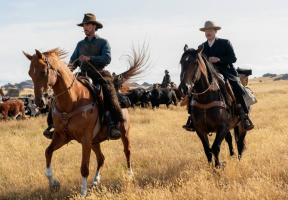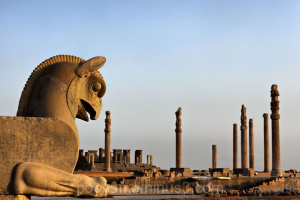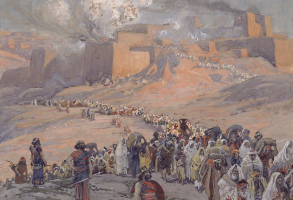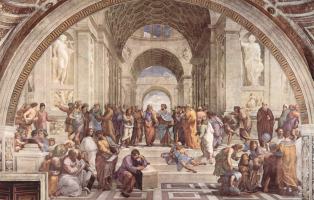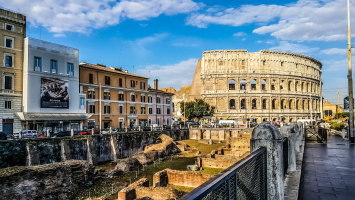Top 7 Fascinating Jesuit Missionaries
The Jesuit Missionaries have left an indelible mark on the world and furthered the spread of science and education (enmeshed with Catholicism, of course) ... read more...around the globe. This list includes some of the most fascinating Jesuit missionaries in history.
-
Ignacio Ellacuría was a Spanish-Salvadoran Jesuit, philosopher, and theologian. He worked mostly as a professor and rector at the Universidad Centroamericana "José Simeón Cañas" (UCA), a Jesuit university in El Salvador. Aside from being a professor, he was also a priest, missionary, and human rights activist.
Ignacio Ellacuría joined the Jesuits in 1947, studied throughout South America and Europe, and earned a Ph.D. in philosophy in 1965. He was a significant influence on the growth of liberation theology in El Salvador and stressed the need of serving the underprivileged. According to this theology, the ministry should aid the political struggle of the poor against wealthy elites. He received numerous death threats for this, and following the murder of a Jesuit priest in 1977 and the murder of Archbishop Juan Arnulfo Romero y Galdámez in 1980, he briefly departed El Salvador.
However, he still returned to fulfill his work. He assisted in mediating the release of President José Napoleon Duarte's daughter from the leftist guerrillas in 1985 and later won the International Alfonso Comn Award in Barcelona for his support of human rights. Despite being a respected Jesuit his whole life, Ignacio Ellacuría's life ended in tragedy, as he and several other Jesuits were assassinated by Salvadoran soldiers in the closing years of the Salvadoran Civil War.Born: November 9, 1930
Died: November 16, 1989
Contribution: His work was defining for the shape UCA took in its first years of existence and the years to come. Ellacuría was also responsible for the development of formation programs for priests in the Jesuit Central American province.
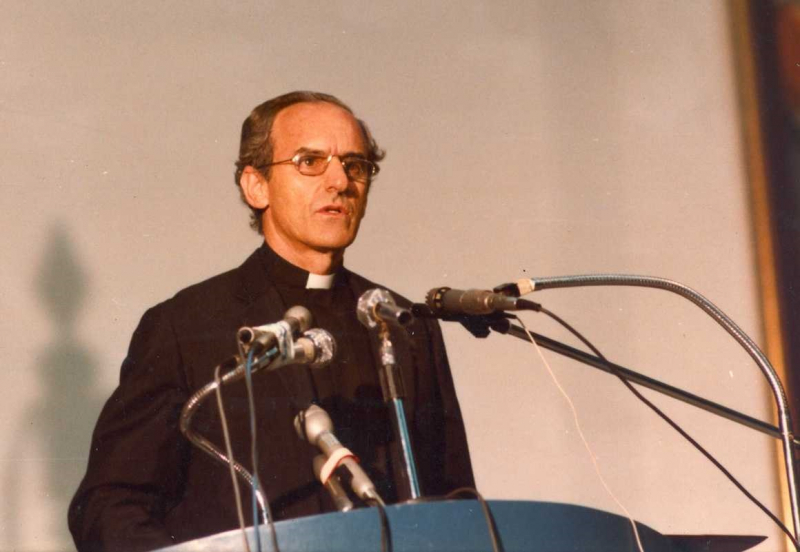
Photo: The Jesuit Post Video: heidi andrea restrepo rhodes -
Pedro Arrupe Gondra was a Spanish Basque priest who served as the 28th Superior General of the Society of Jesus from 1965 to 1983. As he guided the Jesuits in putting the Second Vatican Council into practice, particularly with regard to religion that accomplishes justice and the preferential option for the poor, he has been referred to as the Society's second founder.
Pedro Arrupe Gondra originally attended medical school in Spain, but in 1927, after seeing the destitution in Madrid, he decided to join the Jesuits. Before arriving in Japan as a missionary in 1938, Arrupe had completed medical studies in several European and American nations. He was residing in Hiroshima at the time the American atomic bomb was dropped, along with eight other Jesuits. They survived the explosion, and Arrupe and his fellow Jesuits used their medical training to treat 200 patients at the novitiate-turned-hospital while also providing aid to the critically wounded and injured. He was profoundly affected by the misery of the situation.
Born: 14 November 1907
Died: 5 February 1991
Contribution: The second founder of the Society (led the Jesuits in the implementation of the Second Vatican Council); Used his medical background as a first responder to the atomic bombing of Hiroshima.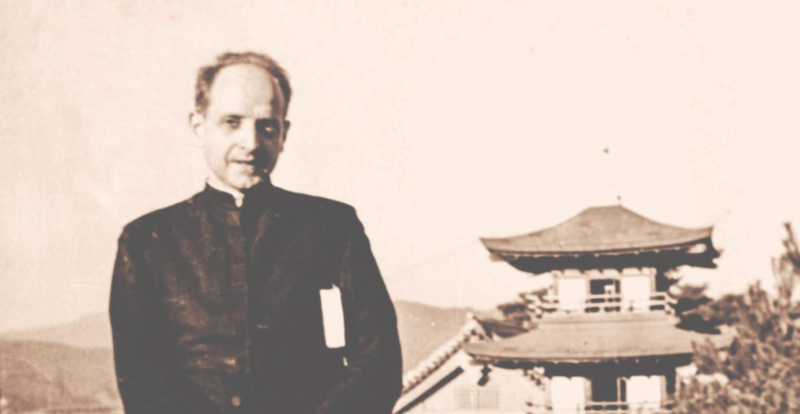
Photo: arrupe.jesuitgeneral.org Video: Pedro Miguel Lamet -
Pierre-Jean De Smet was a Flemish Catholic priest and member of the Society of Jesus (Jesuits). His first mission, established in what is now Iowa in 1838, served the Potawatomi, and following a successful negotiation between them and the Yankton Sioux, he developed a reputation as a peacemaker. In Montana Territory, he established a mission close to the Flathead people's ancestral home, where he was given the name "Black Robe" by the locals. In order to raise money to keep working with them, he frequently traveled to Europe. Over the course of his lifetime, he traveled 16 trips to Europe.
Pierre-Jean De Smet was convinced to travel to Fort Laramie (in modern-day Wyoming) in 1851 to take part in a government-sponsored peace conference because he was acquainted with the Indians. In there, he witnessed the treaty signed by the Plains chiefs, but later also saw how the U.S. administration violated it and how that led to the subsequent Indian uprisings. He then joined the U.S. Army as a chaplain but remained an outspoken advocate for native peoples.Born: 30 January 1801
Died: 23 May 1873
Contribution: Widespread missionary work in the mid-19th century among the Native American peoples, in the midwestern and northwestern United States and western Canada.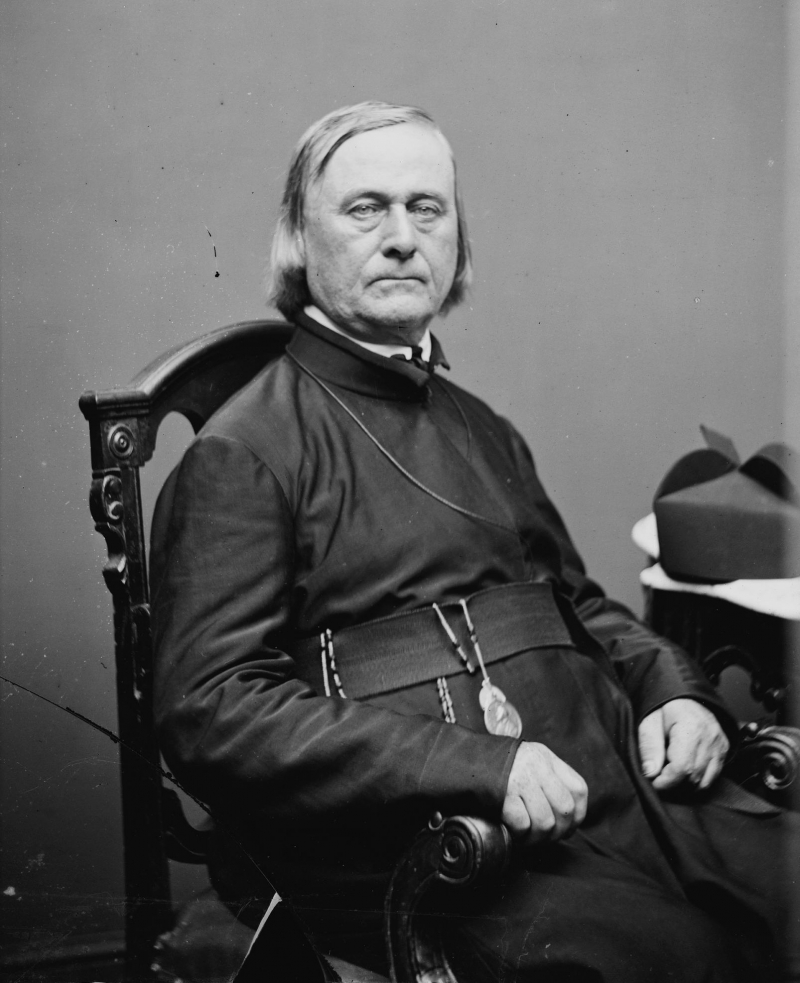
Photo: Wikipedia Video: History: The Teacher of Life -
Peter Claver (Full name Pedro Claver y Corberó) was a Spanish Jesuit priest and missionary. He was born into a devoutly Catholic and prosperous farming family in 1580 - 70 years after King Ferdinand of Spain authorized the purchase of 250 African slaves in Lisbon for his territories in New Spain, thereby initiating the colonial slavery culture. Later, when he was a student at the University of Barcelona, he gained a reputation for his wisdom and religiosity. In the notebook he carried throughout his life, Claver wrote: "I must dedicate myself to the service of God until death, with the understanding that I am like a slave."
From them, Peter Claver dedicated his life to the aid of slaves in Cartagena, Colombia. He attempted to board every approaching slave ship with food and medication in order to provide medical care, offer consolation to the distressed and terrified slaves, and teach religion. Additionally, he went to the local plantations to encourage the slaves there and urge the owners to treat them decently. He was known to turn down the hospitality of the plantation owners during these visits and instead stay in the slave quarters. Despite strong government opposition, Peter persisted for 38 years and is believed to have baptized 300,000 slaves. The Congress of the Republic of Colombia declared September 9 as the Human Rights National Day in his honor.Born: 26 June 1580
Died: 8 September 1654
Contribution: Work as the patron saint of slaves, the Republic of Colombia, and ministry to African Americans.
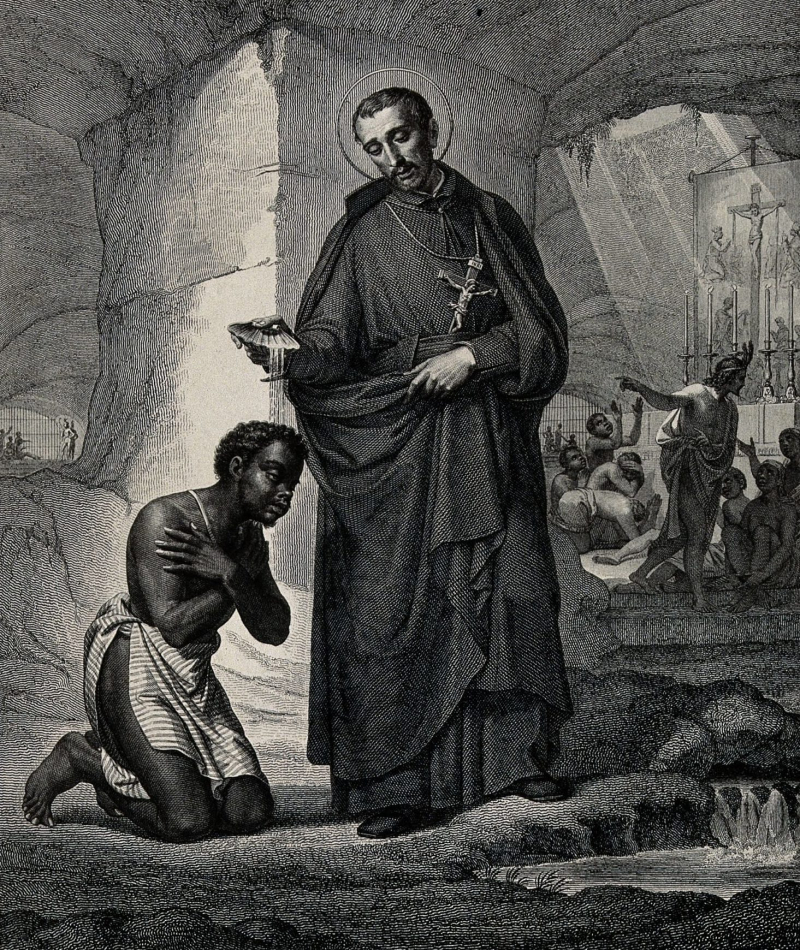
Photo: Catholic Exchange Video: CRUMBZ from gerard -
Matteo Ricci was an Italian Jesuit missionary who introduced Christian teaching to the Chinese empire in the 16th century. Ricci arrived at the Portuguese settlement of Macau in 1582. Ricci spent years adopting the language and culture of China, as he was empowered by the example and teachings of St. Francis Xavier and Alessandro Valignano (who had mentored him in India). This strategy eventually earned him entrance to the Forbidden City of Beijing in 1601 when invited by the Wanli Emperor of China, which was normally closed to foreigners. He was a pioneer in building mutual understanding between China and the West throughout his 30 years in the nation. Therefore, the Apostolic See acknowledged Ricci's "heroic virtues" on December 17, 2022, and bestowed the honorific of Venerable upon him.
Matteo Ricci produced a remarkable map of the world, the “Great Map of Ten Thousand Countries,” which showed China’s geographical relation to the rest of the world. In Nanchang, he also taught geography and astronomy. For the first time in history, he collaborated with a number of Chinese aristocrats, including Xu Guangqi, to translate Euclid's Elements into Chinese and the Confucian classics into Latin. A Chinese mathematician, astronomer, and geographer named Li Zhizao was one of Ricci's most significant converts. His translations of European scientific works significantly aided the development of Western science in China.Born: 6 October 1552
Died: 11 May 1610
Contribution: Being one of the founding figures of the Jesuit China missions. He created the Kunyu Wanguo Quantu, a 1602 map of the world written in Chinese characters.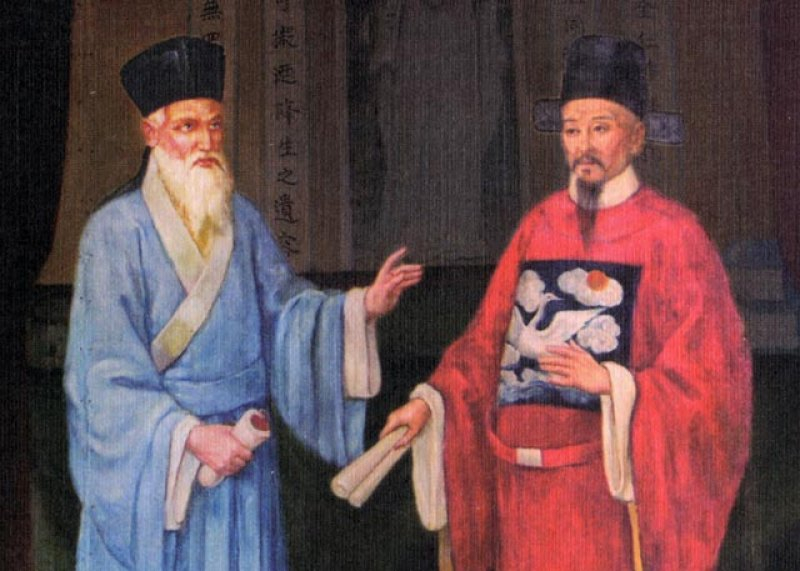
Matteo Ricci and Xu Guangqi in China - www.asianews.it Video: New China TV -
José de Anchieta or José de Anchieta y Díaz de Clavijo was a Spanish Jesuit missionary to the Portuguese colony of Brazil in the second half of the 16th century after joining the order in 1551. After arriving in Brazil in 1553, he was assigned to São Paulo, a brand-new Jesuit colony in the interior that he assisted in founding. Anchieta battled to defend the indigenous people from the institution of slavery that was developing in the Portuguese colony's plantation economy after converting more than a million of them. Anchieta also assisted the Indian population in receiving religious education and converting to the Catholic faith. His and another Jesuit missionary named Manuel da Nóbrega's efforts to appease the Indians were essential to the development of secure colonial settlements in the colony.
José de Anchieta was also an acclaimed writer, dramatist, and scholar and staged several of his own religious plays at his outpost, many of which have been lost. He is the first playwright, the first grammarian, the first poet born in the Canary Islands, and the father of Brazilian literature. Anchieta was also the first to provide an orthography to the Old Tupi language that was most frequently used by Brazil's indigenous people with his work "Arte de gramática da lingoa mais usada na costa do Brasil" (1595, under the name Joseph de Anchieta). Anchieta was also involved in the establishment of three of Brazil's earliest colleges (at Pernambuco, Bahia, and Rio de Janeiro), and contributed to the founding of Rio de Janeiro, one of brazil's biggest cities.Born: 19 March 1534
Died: 9 June 1597
Contribution: Commonly known as "the Apostle of Brazil", he was declared a saint by the Catholic Church. He contributed greatly to Brazil in many ways.
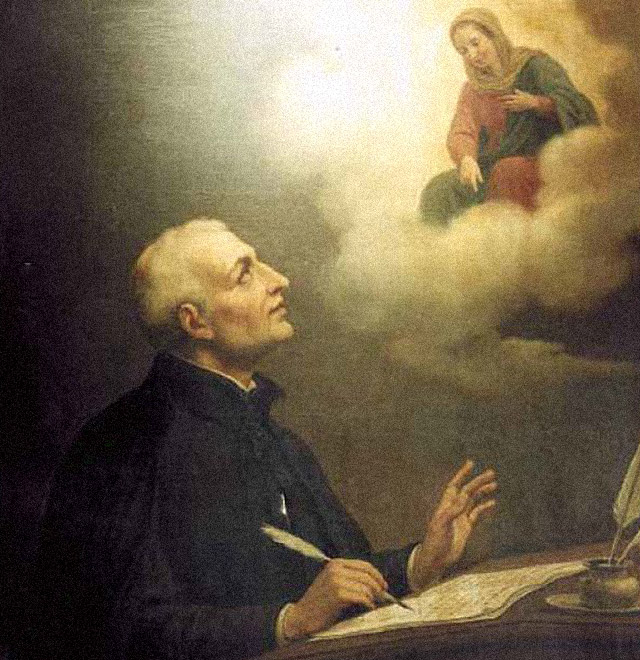
Photo: The Jesuits Video: Padre Paulo Ricardo -
St. Francis Xavier was a Spanish Catholic missionary and saint who was one of the first seven members of the Society of Jesus and is considered one of the greatest Roman Catholic missionaries of modern times. Modern scholars estimated that he baptized some 30,000 converts during his lifetime. He is now co-patron saint of Navarre, with Fermin. The Day of Navarre in Navarre, Spain, marks the anniversary of Francis Xavier's death, on 3 December 1552.
In the span of only a few years, St. Francis Xavier worked with impoverished fishermen in India (1542-45) and headhunters in the Moluccas (1545–48). He was also astonished by the sophistication of the Japanese (1549–151), who had just recently been seen by Europeans at the time. Although he had difficulty speaking the languages of the peoples he tried to proselytize, he was a strong believer that missionaries should learn the traditions and languages of the people they are trying to evangelize, and he was also a major advocate for the education of native clergy—revolutionary ideas at the time.Born: 7 April 1506
Died: 3 December 1552
Contribution: Co-founder of the Society of Jesus. His work established Christianity in India, the Malay Archipelago, and Japan and paved the way for other missionary ventures to Asia.
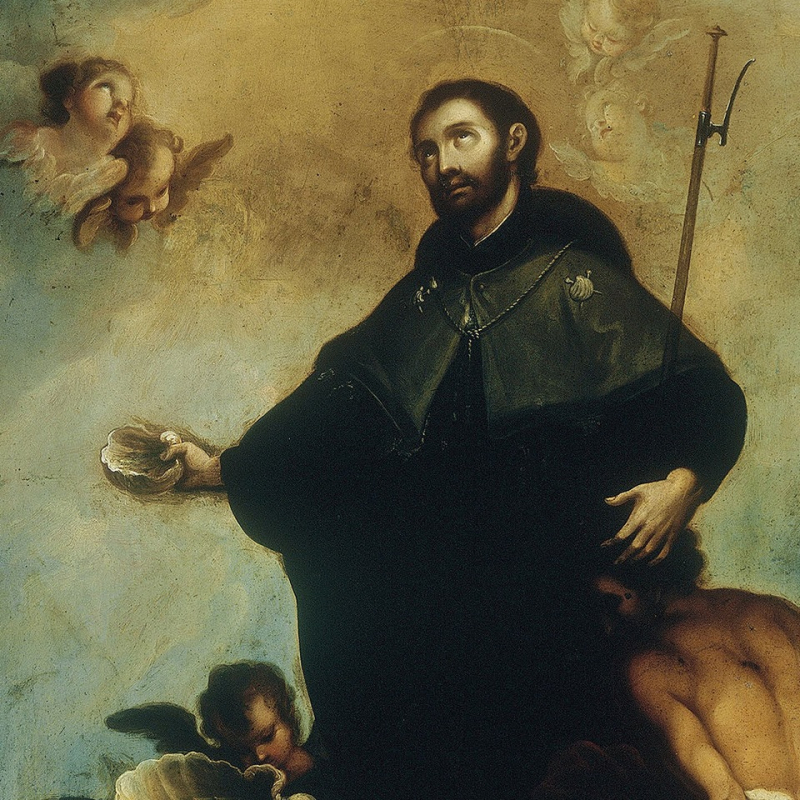
Photo: Word on Fire Video: Sensus Fidelium











